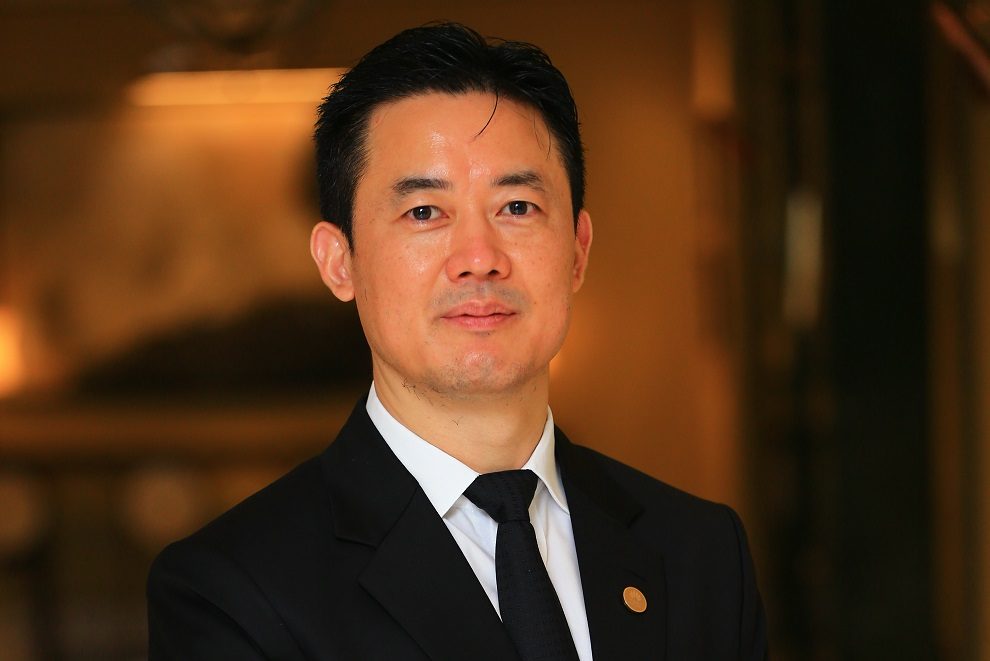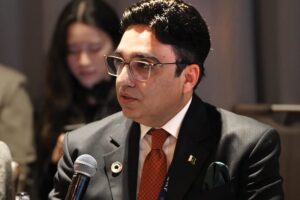Charles Yang
President of Huawei Middle East
Teletimes: The SAMENA Leader’s Summit has been a focal point for ICT industry and policy development for some time, and the issues being tackled in 2021 are all the more pressing due to the disruptions of the last year. What is the key focus of Huawei’s participation in 2021, and what do you expect from the Summit?
Charles Yang: While COVID-19 is our priority for today, the post-pandemic world will need an innovative approach towards economic recovery and improving quality of life; making businesses smarter and creating a more inclusive world in which everyone has the opportunity to thrive. To create the most value in a society empowered by connectivity, it is essential that innovation is developed not only as a means of achieving economic strength, but fosters digital inclusion. Closing the digital divide thus remains pivotal in the Middle East and around the world.
It is with this in mind that Huawei is proud to host this year’s SAMENA Council Leaders’ Summit in partnership with SAMENA Telecommunications Council for the eight-consecutive year. Held under the theme “Championing Digital Economic Growth from Policy to Reality”, it remains an unparalleled platform to spark dialogue between all players within the ICT field. The summit also serves as a platform for decision-makers in the industry who are focused on institutionalizing and fostering cross-sector collaboration. It is our hope that the summit supports the development of an ICT ecosystem that enables us as Huawei to bring digital to every person, home, and organization for a fully connected, intelligent world. Through our collaboration with the SAMENA Telecommunications Council, we can achieve this vision faster and usher in a revival of the digital economy in 2021.
TT: As the world continues to fight the battle against COVID-19, how do you see technological innovation and digitization helping to solve the challenges ahead of us?
CY: It’s impossible to deny that COVID-19 has had a massive impact on individuals, businesses, and countries across the world. However, the past year has emphasized just how important a solid ICT foundation can be on a national level. Following accelerated digitalization initiatives in 2020, technology has played a significant role in enabling the continuity of business and public services. Our work in the ICT field has also been paramount to combatting the disease itself, especially through innovations in scientific R&D, data analytics, e-healthcare, and more.
In turn, the pandemic has created new requirements for digital infrastructure. In one recent study by IDC, for example, the COVID-19 pandemic has led three in four manufacturers in the Middle East, Turkey, and Africa (META) region to engage in or soon start a formal digital transformation (DX) program. In another study, IDC has suggested that direct DX investment is still growing at a compound annual growth rate of 15.5% from 2020 to 2023.
Digital is clearly here to stay and is the way forward for enterprises and governments alike. At Huawei, we have seen how technologies such as 5G, AI, and cloud are more in demand than ever before. When combined, these technologies create immense productivity gains, especially during the unprecedented circumstances of a pandemic. They form the bedrock of a digital economy by enabling intelligent and flexible operations.
Furthermore, digitalization on this level creates additional opportunities. By 2025, for example, Huawei predicts that 97% of all large companies will use AI, and approximately 60% of global carrier revenue will be derived from industry customers. Can the use of these technologies boost economic recovery and establish a solid footing for sustainable growth in the future? We believe that it can, and it will. But industries now need to focus on improving their digital capabilities, building the ICT ecosystem, and creating real value with digital technology.
TT: Huawei has long been a company centered on innovation. Last year, it remained the top patent applicant globally for the fourth straight year, while also leading on the 5G patent race. What has been your motivation, and how are those investments now being applied in the business world?
CY: Huawei is focused on innovation in the three key areas of technology, products, and applications. We believe this will help to break through ICT-related challenges at a company and industry level.
If you look at 5G, the forecasts about 5G network deployment that were made one year ago have all become a reality. The number of 5G users globally has reached 200 million, and 800,000 5G sites have been constructed worldwide. Technology is becoming part of core production processes in industries. 5G applications have already been deployed in more than 20 industries, including manufacturing, healthcare, education, and logistics. Through joint innovation and strategic partnerships with our customers in areas like 5G, we now aim to drive the expansion of 5G applications for businesses while working to develop devices targeted to meet specific industry needs.
Moreover, 5G makes possible the convergence of networks, devices, and technologies such as augmented reality (AR) that lead to new immersive virtual experiences that elevate our interactions with the world. Over the last year in particular, we have seen that there are almost limitless ways in which the high precision integration of virtual and physical realities can create new growth opportunities. In addition to the more traditional academic uses, industries such as entertainment, tourism, transportation, and navigation – amongst others – will benefit from the harmony of the virtual and physical worlds.
At Huawei, we believe this is only made possible by focusing on open innovation and inclusive development.
TT: That strategy has served Huawei well, especially in the Middle East, where the business has moved from strength to strength. What kinds of projects are you now focusing on in the region, particularly in the area of 5G?
CY: In the Middle East, Huawei continues to work closely with governments, telecom authorities, industry partners, academics, and many other entities across the technology value chain to enter into a more connected, digitally-enabled future. Now more than ever, next-generation connectivity has a vital role to play in society.
Since 2018, we have been helping countries in the Middle East to speed up the deployment of 5G networks. Huawei is now the main 5G solution provider and innovation partner in the region, and we cooperate with all the countries that have launched 5G services in the GCC. We are also constantly pioneering new 5G applications for businesses and consumers. We have done this recently working with partners like Saudi Aramco, ADNOC, Dubai International Airport, and many others. Expanding the value of 5G to more people—and more businesses—is a key focus for us this year.
TT: To serve more communities in the region, talent development seems a critical issue for the sector overall. Has that been a priority for Huawei this year, and do you believe we are one step closer to closing the talent gap?
CY: Talent development in the ICT sector is vital to the success of countries’ long-term plans of becoming knowledge-based economies that are globally competitive. It is our aim to support these national visions and create new value in the digital economy by nurturing the region’s aspiring talent within a strong ICT talent ecosystem.
As such, a collaborative approach to ICT ecosystem development is something that Huawei truly believes in. We feel that promoting the development of local talent is best done in cooperation between the public and private sectors. In the past two decades, for example, we’ve helped the Middle East cultivate at least 100,000 ICT talents. Just last year, Huawei announced a new five-year plan in which we will help develop two million ICT professionals internationally by collaborating with academic partners. We will also continue investing heavily in supporting local developers in the Middle East, working extensively with local partners to help them deliver the most innovative experiences to users.
This will ultimately benefit society as a whole.
TT: In closing, are there any final thoughts you have about what lays ahead for the region’s ICT sector?
CY: The pandemic closed many doors. Nonetheless, innovation has opened new windows of opportunity and hope. Through joint industry innovation, open partnerships, and collaborative forums like the SAMENA Leaders’ Summit, I am confident that throughout 2021 we can help make life better, businesses smarter, and the world more inclusive.












